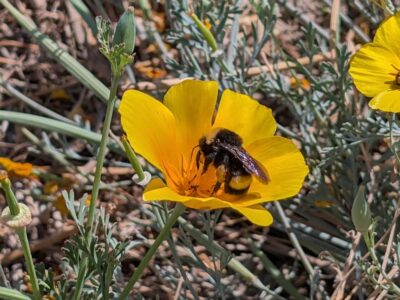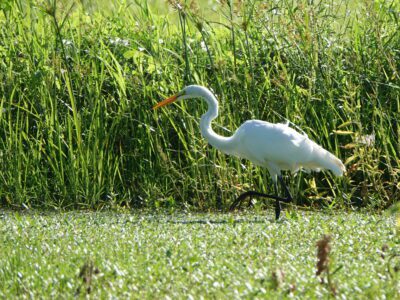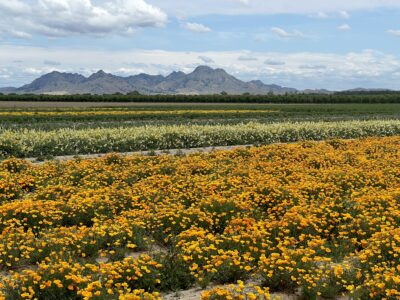In these early days of spring, Pat Reynolds has plenty of reasons to be hopeful. As General Manager of Heritage Growers Native Seed and Plant Supply, the nonprofit native seed venture of River Partners, Reynolds oversees the Colusa-based farm and facilities helping to narrow a native seed shortage throughout California.
Heritage Growers is working to help the state meet its nation-leading biodiversity and climate goals through the next decade and beyond. To do so, the nonprofit has beefed up its staff, is ramping up for a busy 2025, and is ready to provide milkweed seeds, and plants for agencies, organizations, and restoration efforts throughout California.
During a mid-March visit to the Heritage Growers facilities farm, plant and flower colors were a little muted, secure in the promise that within another month or so, the effervescent yellows, oranges, and purples would be in full effect.
“It’s quite aesthetically pleasing right now to see all these forbs that are in flower. And with every passing week, more things will be in flower,” Reynolds said. “It’s an exciting time on the farm.”
Heritage Growers boasts approximately 208 acres of land to help produce native seeds and plants for a variety of native-habitat restoration and milkweed planting occurring throughout California. And as it gears up for its spring harvest, the staff ensure the machinery is in tip-top working order.
“We’re getting everything tuned up and ready to go, preparing our combines, and making sure our harvesting equipment is ready to go,” Reynolds said. “In the month of April, we’ll start to harvest seed.”
Heritage Growers has experience providing plants and seeds on historic, large-scale projects. In early 2024, Heritage Growers grew and cultivated 40,000 plants and 1,500 pounds of locally adapted seed for the Klamath River restoration project, including narrow leaf milkweed (habitat for monarch butterflies and other pollinators), rock penstemon (drought-tolerant plants), and Lemmon’s needle grass (valued forage plant for birds and small mammals).
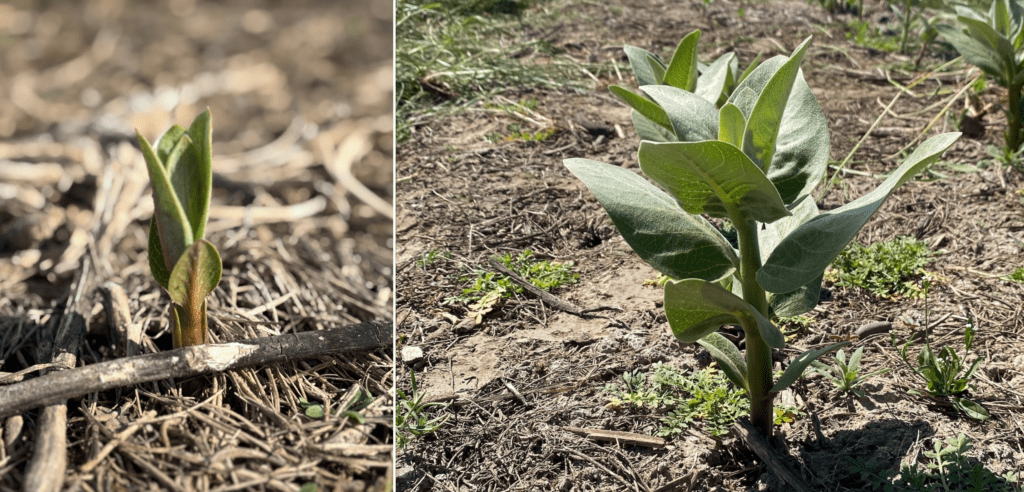
Heritage Growers has several large contracts and agreements to provide source-identified native seed to the National Park Service (NPS), Bureau of Land Management (BLM), U.S. Fish and Wildlife Service (USFWS), Wildlife Conservation Board (WCB) Mattole Restoration Council, Merced Irrigation District, East Bay Regional Park District, Mid-Peninsula Open Space District, East Contra Costa County Habitat Conservancy, Pollinator Partnership, Denise Duffy and Associates, and several others to meet the growing demands of source-identified native seed in California. These large-scale restoration projects not only provide critical seed resources to fuel these specific habitat restoration projects, but they also help with the development of new seed ecotypes to provide seed for other projects in the future.
Yet perhaps the most important products Heritage Growers will harvest this year are milkweed seeds and plants.
Essential to the survival of the imperiled Western monarch butterfly—which the U.S. Fish and Wildlife Service recently proposed for listing under the Endangered Species Act due to habitat loss, pesticide use, and climate change—native milkweed is the only host plant that monarchs lay their eggs on. Because the monarch depends exclusively on milkweed for reproduction, River Partners has set a goal to plant 15 million native milkweed plants across California by 2030 to support Western monarchs and other pollinators—and Heritage Growers is providing the milkweed to support this monumental statewide effort.
“We are well positioned to do this work,” said River Partners Associate Director of Science Michael Rogner. “The listing of monarchs will spotlight our plan to scale milkweed restoration efforts in California.”
“We’re growing out five or six different species of milkweed on 11 different fields,” Reynolds said. “We have more than five acres in the ground, producing hundreds of pounds of seed to establish milkweed in wildland settings.”
Heritage Growers continues to collaborate with the Xerces Society, a long-time partner and NGO focusing on invertebrate conservation, helping to provide milkweed plants for California Monarch and Pollinator Habitat Kits. With approximately 1,000 plants per kit, they combine milkweed species and nectar species, both vital ingredients along the monarch’s migratory path, which the Xerces Society gives to qualified applicants.

“The kits are given to working lands, like monarch habitat strips on the edge of the farm field, or a school gardens where they’re making butterfly habitat, or in a city’s open space area,” Reynolds said. “Or it could be added to habitat restoration projects.”
Well before the seed goes out the door, though, native seeds must be collected. Led by Heritage Growers Wildland Seed Collection Manager Haleigh Holgate, the team first scouts wildlands to find native plants and flowers that might be ready for seed collection, with a current focus on the San Joaquin Valley and Tulare Basin regions. In 2025, Heritage Growers’ wildland seed collection team has a goal of collecting more than 150 different species across 40 locations between Mendocino County along the coast and Kern County that’s home to farming communities like Bakersfield.
Finding milkweed and collecting its seeds is integral to in Heritage Growers’ strategy—no matter the species of seeds the team is out collecting, Reynolds said, “Everywhere we go, we constantly look for milkweed.”
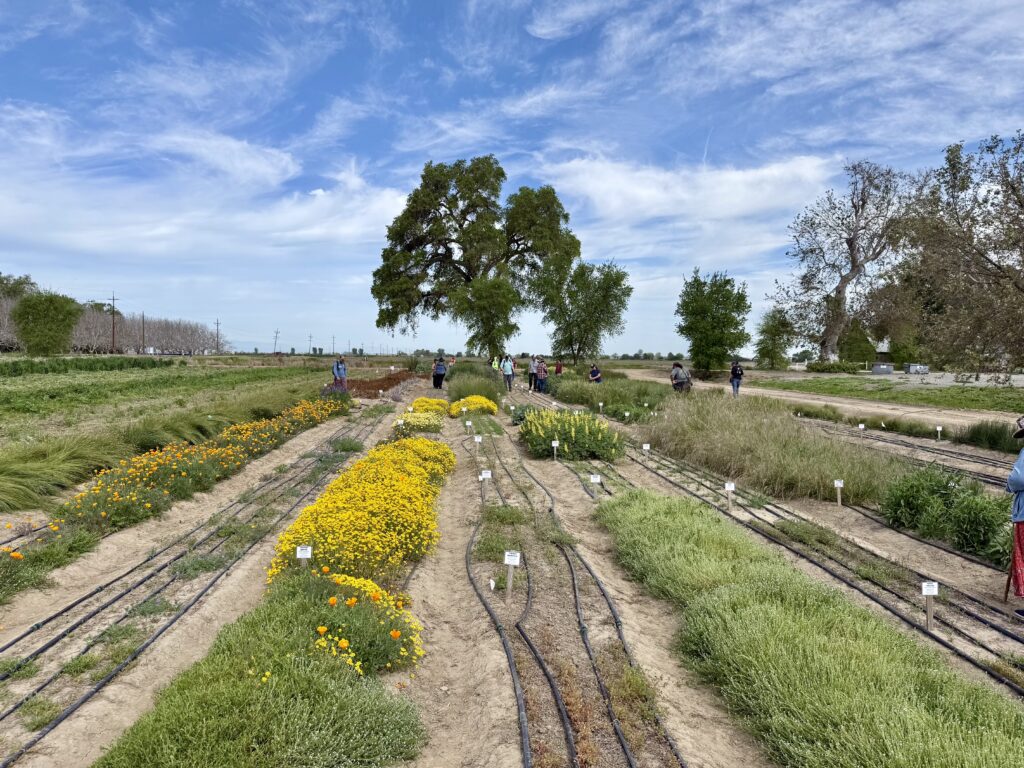
“Part of our wildland seed collection includes targeted collections, but it also includes advantageous collections, when we discover populations while we’re out,” he said. “When we have permission to collect, we’ll collect that material on the spot, or we’ll find it and add it to the list of materials we’ll collect another time.”
With a rosy outlook for this year, beyond 2025 also looks promising for Heritage Growers. Reynolds said they have the ability to produce, and will be producing, a large abundance and diversity of native plants, and seeds that are hard to find in California or aren’t available at all—with the capacity to increase that. And as word spreads more broadly about Heritage Growers through word of mouth, with success on restoration sites throughout California and beyond, and on farm tours happening throughout the year, Reynolds said he’s seeing an uptick in inquiries.
“We’re getting lots of interest from folks that want to buy our seeds and plants,” he said. “There are a lot of large projects on the horizon that we are well-positioned to provide the seeds and plants for. It’s an exciting time.”



